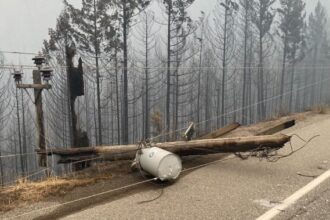As thousands flee advancing wildfires in northern Saskatchewan, the Regina Food Bank has rapidly transformed its operation to meet the urgent needs of evacuees seeking refuge in the provincial capital. The humanitarian response comes as Saskatchewan grapples with one of its most destructive wildfire seasons in recent memory.
“We’re witnessing an unprecedented level of displacement,” said David Froh, CEO of the Regina Food Bank, during yesterday’s emergency coordination meeting. “When people arrive with nothing but the clothes on their backs, our responsibility is clear—we must provide immediate relief while preserving their dignity during this traumatic time.”
The organization has established a specialized distribution system at the Brandt Centre, where over 1,200 evacuees are currently sheltered. The modified approach prioritizes culturally appropriate food options and addresses dietary restrictions, acknowledging the diverse needs of northern communities now temporarily residing in Regina.
Staff from the CO24 News team visited the facility yesterday, observing volunteers assembling emergency food hampers containing three days of supplies for each arriving family. The operation runs with remarkable efficiency despite being assembled within just 48 hours of the first evacuation orders.
“What’s unique about this crisis is the scale and speed,” explained Emergency Management Coordinator Lana Phillips. “Unlike typical food insecurity scenarios where need gradually increases, we’ve had to scale operations ten-fold virtually overnight.”
The food bank’s response extends beyond immediate nutrition. Working with Canada Health Services and local Indigenous elders, they’ve incorporated traditional foods like wild rice and dried meat where possible, recognizing food’s cultural significance during displacement.
Financial strain on the organization has been considerable. The food bank has redirected approximately $175,000 from existing programs to emergency response efforts, a significant reallocation for the non-profit. CO24 Business sources confirm local corporations have stepped in with substantial donations, though specific figures remain undisclosed.
“We’re operating at capacity but preparing for this situation to potentially worsen,” Froh added. “Climate projections suggest these fires may continue advancing, and we could see evacuation numbers double within the week.”
Provincial coordination between CO24 Politics and emergency management officials has improved dramatically compared to previous disasters, with real-time communication channels established between northern communities and support organizations in Regina. This enhanced coordination has allowed the food bank to anticipate needs before evacuees arrive.
For perspective on the scale of this disaster, wildfire data indicates over 780,000 hectares have burned across Saskatchewan’s northern regions this season—nearly triple the five-year average for this point in June. The World Meteorological Organization has linked the intensity of this year’s Canadian wildfire season to climate change patterns affecting precipitation and temperature across the boreal forest region.
As Regina’s community rallies around those displaced, the question increasingly being asked by emergency planners and climate scientists alike is sobering: Is this extraordinary response becoming our new normal, and how must our institutions evolve to meet the challenges of a warming world?










